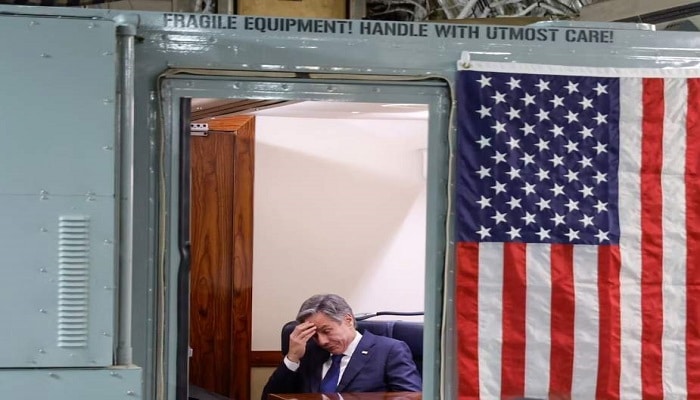PNN – Although the crisis of Ukraine and Gaza have differences, the interventionist presence of America to increase its role in Europe and the Middle East region through the creation of proxy wars is analyzed as the common point of these two crises.
According to Pakistan News Network, America’s role as an intervening actor in regional and global crises has always been considered one of the most controversial patterns of behavior between governments; A government whose presence in world conflicts is destabilizing most of the time and its lack of presence has also caused the time to find solutions for crises to be prolonged. During the decades after the emergence of the “American Peace” (Pax Americana) model, the world is still facing this important question, why is the role of America in global crises so doubtful and different?
After the Second World War, America has had a bold, interventionist and questionable presence in most regional crises, especially in Europe and the Middle East. During the Cold War, the strategic confrontation between the United States and the Soviet Union in Europe divided the continent into two eastern and western parts, and Washington was the cause of many identity-military conflicts in Europe due to its strategic confrontation with the Soviet Union, after the end of the cold war and the collapse of the Soviet Union, the United States had an interventionist presence in the identity crises of Kosovo, Bosnia and Herzegovina, and Serbia. Washington’s role in post-Cold War Europe can be analyzed in the framework of economic development and integration, political-security and NATO expansion. With the beginning of the war in Ukraine, America entered the war with Russia as the most important intervening force.
Read more:
But finding the role of America in the Middle East region can be analyzed from another direction; The presence of American oil companies in the oil fields with the aim of increasing development and economic benefits caused the US to expand its military presence by influencing the oil areas. America’s role as a supporter of Israel can be analyzed as the most important factor in creating a crisis-prone and unstable Middle East; A Middle East that could become a permanent situation with the formation of Israel and the accumulation of geopolitical contradictions, the role and presence of America. In such a way that the first Arab-Israeli war (July 1948), the Suez Canal crisis (November 1956), the 6-day war (June 1967), the 1973 war (October 1973) and the peace agreements of the Camp David Treaty (March 1978), the Madrid Conference (September 1991), the agreement Oslo 1 (September 1993), Oslo Conference 2 (September 1995) and Camp David Conference 2 (July 2000) and the plan of two independent governments and the Abraham Accords initiative have not yet been able to bring this region to stability and tranquility and in all these crises and trends, America has played a major role.
From the point of view of the macro-structure of decision-making and policy-making in the United States, Israel, as an exceptional entity among countries with an authoritarian structure, must maintain its position with the characteristic of a strong state. On the other hand, it seems that the power equations in the American decision-making structure, especially the presence of the powerful Jewish lobby (IPEC) in the two main Democratic and Republican parties, large economic-media companies, and the military structure of this country are oriented in a direction that It has made Washington the biggest supporter of Israel. With the beginning of the October 7th war in Gaza, once again with the increase of American political and military support to Israel, this question is raised: What does America want from the war in Ukraine and Gaza?
Proxy War can be analyzed as the common point of American strategy for the two recent crises.
By using the proxy war strategy in Ukraine, America seeks to form a weak Russia and a dependent Europe. The strategic perception of American policymakers is focused on the fact that Russia should move towards reducing strategic and geopolitical mobility and even internal changes through economic restrictions and sanctions and conflict in a process of war and erosive crisis.
With America’s focus on East Asia (Pivot to Asia), Washington tried to reduce its military expenses in the Middle East region and turn its military focus to East Asia to limit China. But on the other hand, by supporting a Middle East policy aimed at Israel, he tried to stabilize the Middle East through the normalization plan known as the Ibrahim peace plan and also emphasize the role of Israel. The beginning of the Gaza war, however, created different conditions for Israel and the United States, and the beginning of the crisis and the increase in the scope of the war caused the United States to try to implement Israel-centered security proposition and Washington’s new role in the Middle East through its proxy force, Israel.

